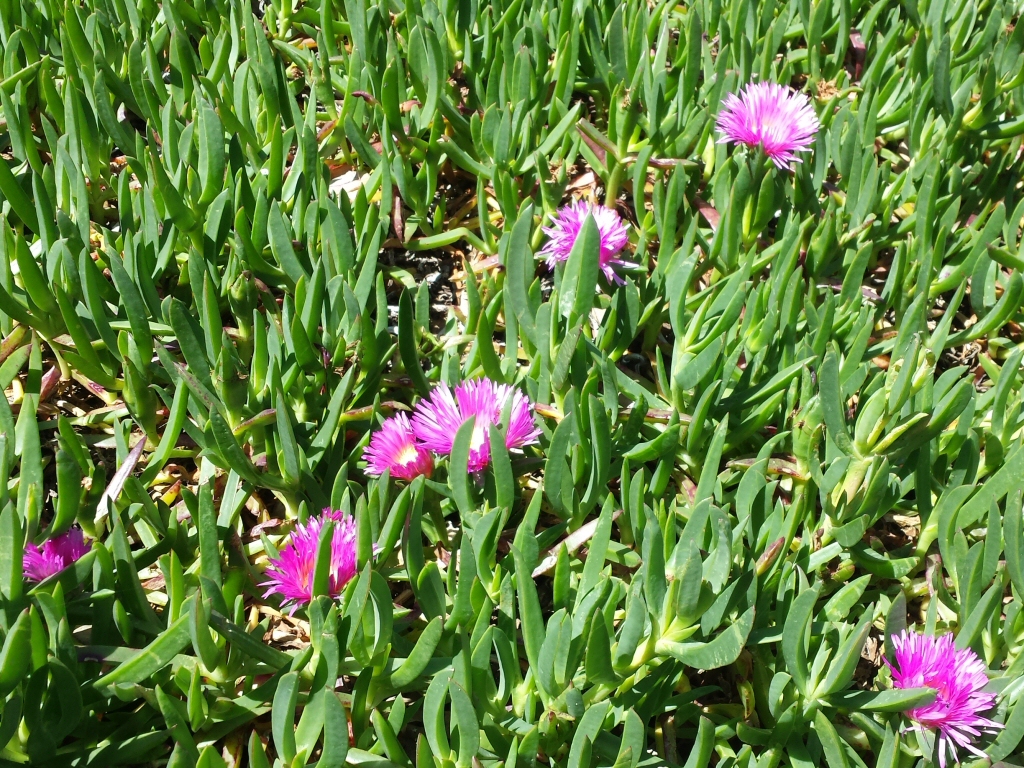Traditionally Australian gardens were on quarter acre blocks or larger, but with more people in cities, garden spaces are getting smaller. But this should not deter keen Aussie gardeners who are interested in growing their own native food, as there is a wealth of smaller plants which will add the taste of the bush to your cooking and foraging.
Apium prostratum- Sea Celery or Native Parsley
A must have native plant for edible gardening in small spaces, as it’s decorative ferny foliage looks good and is useful in many different types of dishes. It is fairly hardy in the right place, growing best in part shade, and is perfect for container growing as well as in the garden. The leaves and younger stems are lovely in salads, soups, stews and as a garnish. It can be used anywhere that you would use parsley or celery. Fertilise and water regularly to encourage plenty of new growth.
Carpobrotus– Native Pigface
A great native succulent, this hardy and adaptable plant is great for hot sunny spots. It is very suitable for pot culture and green walls, and is great for soil stabilisation in the garden. A great waterwise plant, very drought tolerant.
The seed pods are edible, and are at their best when they change colour. Pick just above the stem, hold by the end and suck out the pulp, which has a salty, fruity taste, or eat them whole. Aboriginal people would cook Carpobrotus with meat as a savoury
Billardiera cymosa- Apple Berry
A light twining vine, apple berry has cream, pink to mauve flowers in clusters, followed by green to reddish or blackish fruit. It is an adaptable plant that likes a well drained soil, and comes from South Australia and Victoria. It bears small quantities of fruit, with the taste of aniseed. The ripest fruit will fall to the ground, and they develop a sweeter taste the riper they get.
Tetragonia tetragonioides– Warrigal Greens, Native Spinach
Another easy care and useful low growing plant for green walls, hanging baskets and containers, as well as out in the garden. Often found growing near the sea, it is salt and drought tolerant. It has small yellow flowers, but it is the foliage that is eaten, which makes a good spinach substitute. Like spinach, it has significant levels of oxalic acid, but blanching in boiling water for a minute or two will leach it out.
Citrus australasica – Finger lime
-

Citrus australasica 'Judys Everbearing'
-

Citrus australasica x sanguinea 'Rainforest Pearl'
-

Citrus australasica 'Green Sapphire'
This is a larger growing plant, but it is very suitable for growing in a large container provided you use a good potting mix and give it regular feeding and watering. It bears small fruit that have lovely citrus ‘pearls’ inside, which are great in cooking and look and taste sensational for garnishes. It is a very spiky plant, which again suits pot culture where there is less need for weeding. The spikiness can be used for great effect where you want to keep people or animals away from certain areas. It responds well to pruning to size.
Kunzea pomifera– Muntries, Monterry, Native Cranberry
A tough low growing plant which can be grown as a ground cover or trained on a low trellis, it has pretty cream to mauve fluffy flowers followed by reddish fruit in summer. The crunchy fruit are like spicy mini apples, are high in antioxidants, and are produced in profusion. The plant dislikes over or under watering, and suits sun to part shade. It can also be container grown. Eat the fruit fresh or use in conserves. Muntries are now being produced commercially.
Kunzea and Billardiera pictures provided by Philip Clarke, from his new book Discovering Aboriginal Plant Use: Journeys of an Australian Anthropologist









